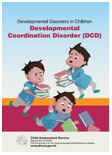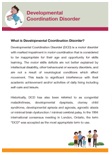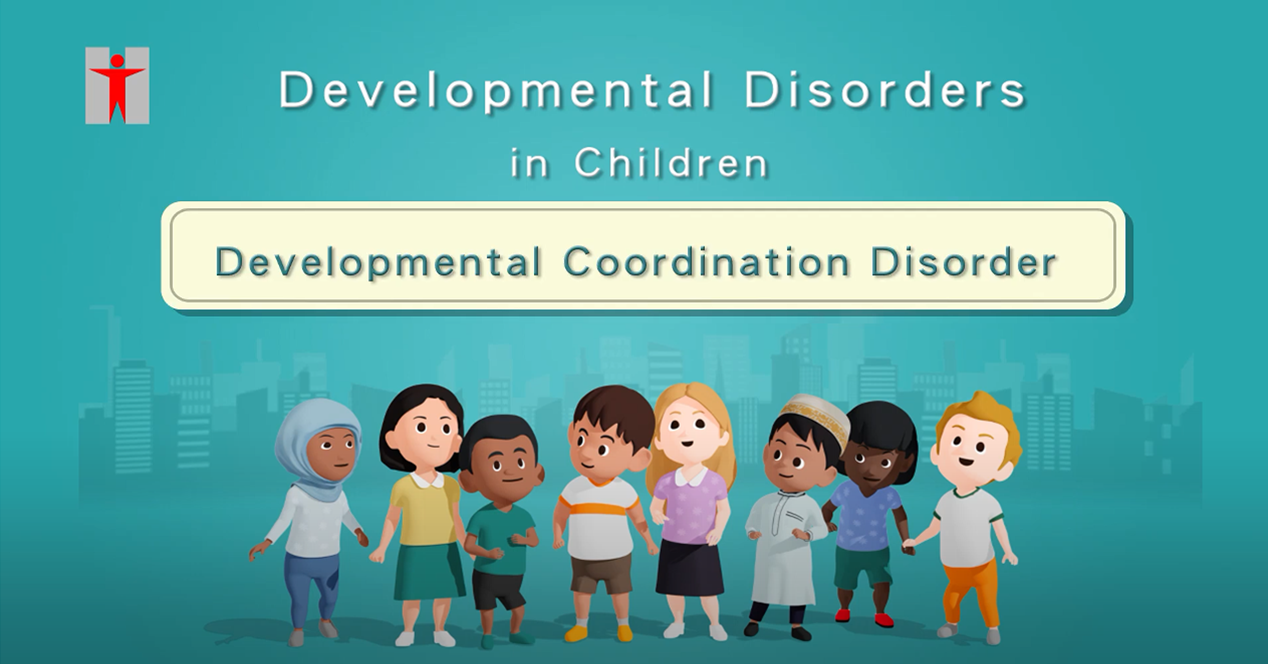Developmental Coordination Disorder
Developmental Coordination Disorder (DCD) is a motor disorder with marked impairment in motor coordination that is considered to be inappropriate for their age and opportunity for skills learning. The motor skills deficits are not better explained by intellectual disability, other behavioural or sensory disorders, and are not a result of neurological conditions which affect movement. This leads to significant interference with their academic achievement and/or activities of daily living including self-care and leisure.
Historically, DCD has also been referred to as congenital maladroitness, developmental dyspraxia, clumsy child syndrome, developmental apraxia and agnosia, agnostic ataxia or minimal brain dysfunction / minimal cerebral palsy. In the 1994 international consensus meeting in London, Ontario, the term “DCD” was accepted as the most appropriate term to use.
The symptoms of DCD are usually noticed between 5 to 11 years old. In Hong Kong, the peak age for diagnosis was in early primary school years. Some of these children have problems predominantly in gross motor coordination, others predominantly in fine motor coordination, while the rest are affected in both areas.
Children may first appear as delayed in learning to climb stairs, feed themselves and in playing. Mastery of self-care tasks such as dressing and using utensils are also delayed. Later on, problems with academic tasks may appear, including handwriting and copying tasks, and participation in physical education (especially gymnastics) classes.
DCD affects the children’s daily functioning and can have significant long-term effects on academic, psychosocial and vocational outcomes. Children with DCD are often misunderstood, teased or bullied. Many have low self-esteem, high levels of anxiety and behavioral problems. Avoidance or lack of physical activities or hobbies can lead to obesity and poor physical fitness.
Internationally, it has been suggested that between 5 to 6 percent of 5 to 11-year-old children have DCD, with more cases in boys than girls.
In Hong Kong, there are no formal statistics available for DCD. For cases diagnosed to have DCD in Child Assessment Service in Year 2019, more boys than girls were found to be affected, with a ratio of about 3-4 to 1.
The exact cause of DCD has yet to be determined. There is an increased incidence of DCD in premature and low-birth-weight children, and family histories of the condition suggest a possible genetic link. No specific brain lesion has been identified.
There is continuing debate on the suggested mechanisms for DCD. These include defects in the processing of visual perceptual information, joint sensation, and integration of different sensory modalities etc., which affect the ability to make efficient movements and motoric adjustments. Abnormalities in the planning and execution of movements such as those related to timing, muscle force and balance have also been proposed.
20-50% of children with DCD may have other associated problems such as attention deficit /hyperactivity disorder, autism spectrum disorder, language disorder or dyslexia.
Up to date there is no medication for DCD. Specific management of DCD involves training in two aspects. The first is focused on remediating the children’s underlying deficits (such as sense of balance) with the expectation of subsequent improvement in motor performance. The second is to train task-specific skills through breaking down the task activities (such as dressing and skipping) into small steps to be practiced separately and gradually acquire the skills to achieve the task.
It is difficult to predict long-term outcome based on the initial presentation of the condition. Although severe cases may persist into adulthood, it is possible for mild problems to improve with time, with some children catching up with age-appropriate motor performance after training. However for other children, early childhood problems with play and self-care may develop into problems with learning, social skills, employment and social participation. These may in turn affect their self-esteem, performance in educational activities and activities of daily living.
-
Education Bureau: Integrated Education and Special Education Information Online
https://sense.edb.gov.hk/en/index.html -
CanChild Centre for Childhood Disability Research
http://www.canchild.ca -
Dyspraxia Foundation
http://www.dyspraxiafoundation.org.uk
- American Psychiatric Association, APA (2013). Diagnostic and statistical manual of mental disorders (5th ed.). Washington, DC: American Psychiatric Association.
- Blank, R., Smits-Engelsman, B., Polatajko, H., et al. (2012). European Academy for Childhood Disability. European Academy for Childhood Disability (EACD): recommendations on the definition, diagnosis and intervention of developmental coordination disorder (long version). Developmental Medicine & Child Neurology, 54, 54-93.
- Cairney, J. (2015). Developmental Coordination Disorder and its Consequences. Toronto: University of Toronto Press.

Short Factsheet

Long Factsheet



